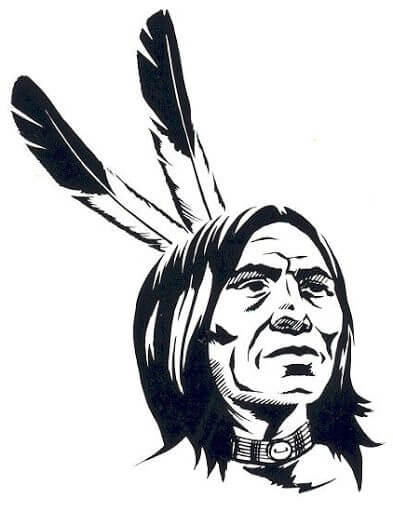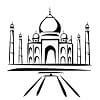- Home
- Holiday Ideas
-
-
- Choose Your Traveling Theme
-
- Adventure Tourism
-
- Cultural Tourism
-
- Tour Packages
-
-
- Packages by State
-
- Holidays by Interest
-
- Popular Tour Packages
-
- Fair And Festivals
-
- Ayurveda And Yoga
-
- Offers
-
- Destinations
-
Mahabaleshwar
Queen of natural beauty
Mahabaleshwar
Snuggled within the beautiful hills and valleys of the UNESCO World Heritage Site of the Western Ghats, the town of Mahabaleshwar, in Maharashtra, may be a rare blend of surreal beauty interspersed with colonial charm. Fondly called the Queen of Sahyadri Hills, Mahabaleshwar boasts narrow lanes flanked by pretty cottages overlooking verdant valleys; friendly shopkeepers happy to regale you with stories of old; and therefore the fragrance of strawberries that seems to permeate every breath – this is often what defines the charm and appeal of Mahabaleshwar. Several breathtaking vantage points with charming tales attached to them offer awe-inspiring views of lush mountain scenery.
...
A popular getaway from the cities of Pune (120 km) and Mumbai (285 km), Mahabaleshwar enjoys a pleasing climate throughout the year. it’s well-known for strawberry and mulberry farming. Several small and quaint cafes serve delicious and refreshing strawberry and cream that’s a must-try. The cream is whipped up fresh a day , and therefore the strawberries are juicy and red, plucked from the various fields that are spread across the land.
The old a part of the town still retains its former grace and boasts a Mahadev temple that features a statue of a cow.
The source of River Krishna is claimed to be the mouth of this cow. Besides, four more rivers – Koyna, Venna, Savitri and Gayatri also begin of the mouth of this cow and afterward , merge into the Krishna river. The rivers Venna and Koyna are said to be Lord Shiva and Lord Brahma who, along side Lord Vishnu, form the highly revered Hindu trinity – the three deities who are said to perform the cosmic functions of creation, preservation and destruction. And actually , the name Mahabaleshwar itself means god of world power .
Mahabaleshwar served because the summer capital of the Bombay province during British Rule, and therefore the town came into being circa 1829.
Read MoreHow to get there ?
By Air
Pune is the nearest airport, around 120 km away. One can take a cab from Pune to Mahabaleshwar.
By Road
State transport buses are available from Dadar and Mumbai CST to Mahabaleshwar. One can also take a cab, travelling via Panvel, Mahad and Poladpur, to reach Mahabaleshwar in around five hours. From Pune, the cab will travel on NH 4 and then take a diversion at Surur to Wai from where it is a picturesque drive through Pasarani Ghat up to Mahabaleshwar.
Rail
Satara, around 55 km away, is the nearest railhead. Pune is the closest major railway junction. One can easily get a state transport bus or a cab to reach Mahabaleshwar from both these places.
Attractions in Mahabaleshwar

Arthur's Seat
For a gorgeous view of Jor Valley, this is often the perfect viewing point. it’s said that Sir Arthur Mallet, who is claimed to be the primary man to create a house here, wont to sit and admire River Savitri from now . Also referred to as the Queen of the Points, and originally as Madhi Mahal, Arthur’s Seat lies at an elevation of 1,470 m. the foremost appealing and entertaining feature of this place is that the atmospheric pressure that causes light objects, like bottle caps, to float! The southern side of Arthur’s Seat has stratified rocks that are similar in appearance to the Grand Canyon in Colorado, USA. Echo Point, Hunter Point, Tiger Spring Point, Window Point and Malcom Point are a number of the opposite viewing points here.
Pratapgad Fort
Located on the outskirts of Mahabaleshwar, the Pratapgad Fort is perched at a height of 1,100 ft above water level and offers spectacular views of surrounding green valleys and therefore the imposing range . it’s divided into two parts. The sprawling lower fort has 10-12 m high towers and bastions at corners on projecting spurs. it’s built on the southern and eastern terraces. The upper fort, 180 m long on all sides , wont to host the most proceedings. The Mahadev Temple is found on the northwest side of the upper fort and therefore the royal darbar wont to be held ahead of it as Maratha leader Shivaji believed that nobody would dwell this holy space.
The fort was commissioned by Chhatrapati Shivaji, and built by his prime minister, Moropant Trimbak Pingle in 1656, to regulate the officers of the Javali basin nearby, also on defend the banks of the Nira and Koyna rivers, and therefore the Par Pass. it’s said that at this fort Afzal Khan, commander of the Bijapur Adilshahi forces, came to satisfy Chhatrapati Shivaji. His intent was evil, and he tried to stab Shivaji as he embraced him in greeting. Shivaji was unharmed as he was wearing an iron armour and he swiftly took out his waghnakhi (iron tiger claws) that he had hidden under his finger rings and attacked Afzal Khan. Sambhaji Kavji Kondhalkar, Shivaji’s lieutenant, then beheaded Khan. On Shivaji’s orders, a dargah named Afzal Buruj was built at Pratapgad Fort. it’s also home to a temple dedicated to Goddess Bhavani and it’s said that Shivaji received a replacement sword from the goddess at this temple.
In 1957, former prime minister, Nehru unveiled a 17-m-high equestrian bronze statue of Shivaji. Today, Pratapgad Fort is owned by Udayan Raje Bhonsle, Shivaji’s descendant and heir of the Satara princely state. Several of the good king’s descendants still sleep in this fort.

WANT TO RENT A CAR IN INDIA ?
Choose Your Traveling Theme

 TOUR BOOKING
TOUR BOOKING















